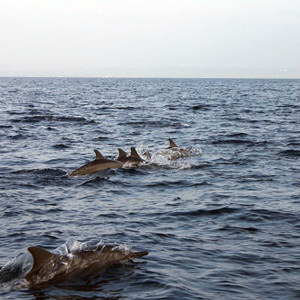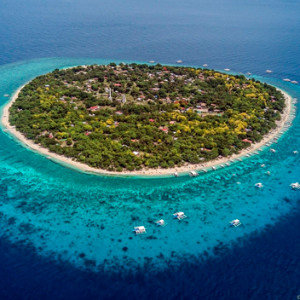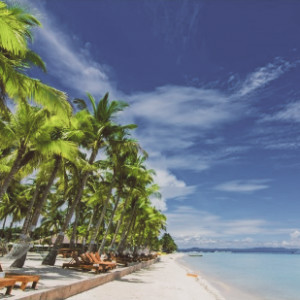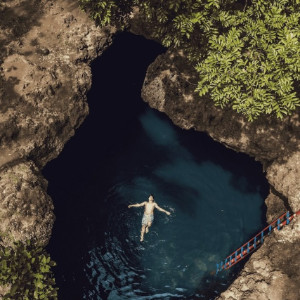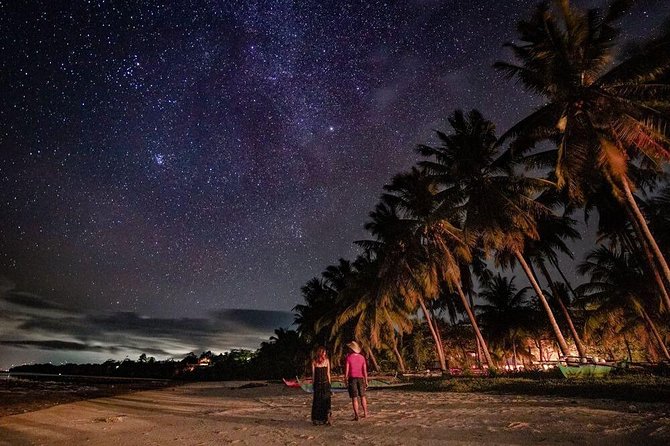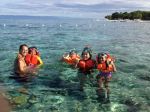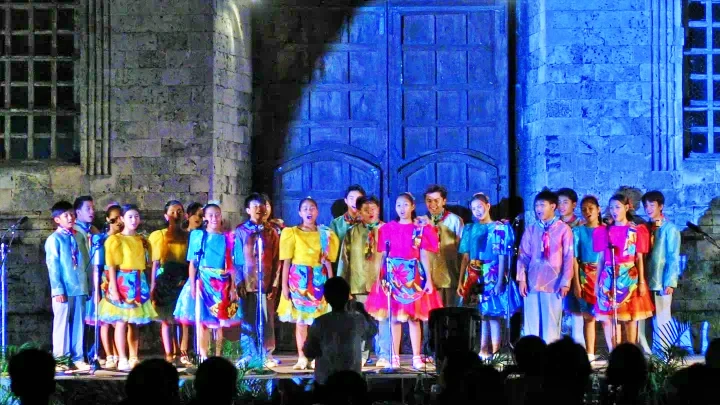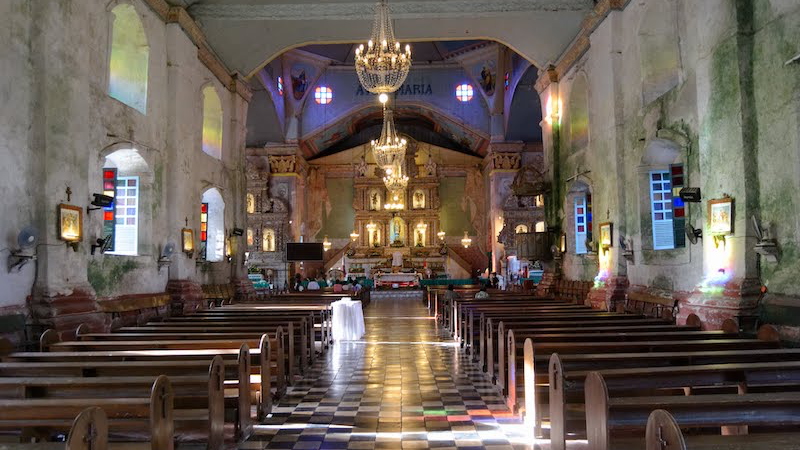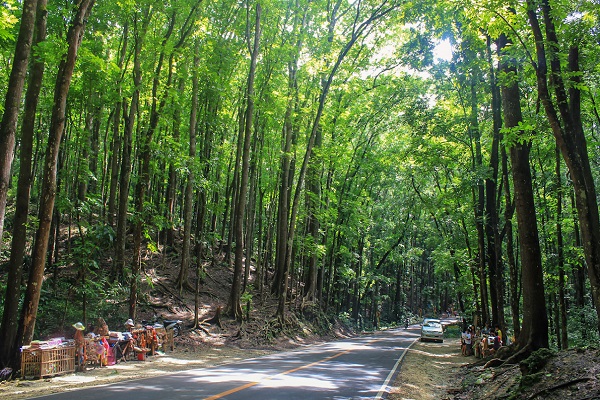- Bohol
- Bohol Travel
- Bohol Stories
- The Moalong Ambuscade
The Moalong Ambuscade
Secure your Cebu Bohol ferry tickets today to start your unforgettable journey!
Excerpts from “The Bohol Guerrillas in Action” by Pio B. Ferandos
Summary
On September 27, 1942, the Moalong ambuscade took place, involving a group of guerrillas and around 70 Japanese soldiers. As the Japanese approached in two passenger trucks, the guerrillas quickly took their positions. The guerrillas unleashed a fierce attack, using grenades, dynamite, rifles, and pistols. One of the trucks was hit, causing it to overturn and fall into the sea, resulting in casualties among the Japanese. The Japanese retaliated with mortar fire and gunfire, but the guerrillas held their ground. Captain Salazar ordered his men to encircle the Japanese, and the fighting continued throughout the day. Lieutenant Nunag played a significant role, eliminating several Japanese soldiers. By 2 p.m., the guerrillas had gained control of the Moalong Bridge and the surrounding area.
The Moalong ambuscade took place at 7:30 a.m. on September 27, 1942. It was a Sunday. Before the guerrillas were able to take one bite of their breakfast, two passenger trucks loaded with around 70 Japanese soldiers rambled down the road from the direction of Tagbilaran. Upon hearing the rumbling sound of the approaching vehicles, and on the command of Capt. Salazar, the men immediately leaped to their respective positions.
Under cover, one sees two Japanese holding each an automatic rifle on top of the first bus with sandbags at their sides. On top of the second bus were three Japanese holding a low-mounted machine gun and a stoke mortar. The guerrillas watched anxiously as the buses inched their way along the road up to the point when they were past the Moalong Bridge, just below the high cliff. Then the much-awaited cry of Capt. Salazar was heard: “FIRE”.
In an instant, the guerrillas let loose a volley of their grenades, dynamites, automatic rifles, shotguns and pistols, whatever! Lt. Nunag hurled a hand grenade into the driver’s seat of the second bus. It exploded and the bus turned turtle and fell into the sea, killing and maiming most of the passengers therein. Hunger and fatigue were forgotten. At that moment, all intent was to kill and avenge the wrong done to loved ones – even unto death! The love of country prevailed!
Completely taken by surprise, the Japanese were immobilized for a moment. After taking hold of their wits, they leaped out of the bus; returning fire with their mortar, machine gun, automatic rifles and .25 calibre rifles. All hell was let loose. The Japanese hid behind trucks, some behind the road-props and steel bridge, while others hid in the holes by the roadside.
Recommended Bohol Philippines Tours
[ Bohol Sight Seeing Day Trips - Check Out Availability ]
[ Full Day Cruise and Sailing Tours - Check out Availability ]
[ Full Day Adventure Tours - Check out Availability ]
Discover more of Bohol's natural wonders through our recommended tours. Click on the links below to embark on unforgettable adventures:
Ready to explore the beautiful islands of Cebu and Bohol? Secure your ferry tickets today through 12go and start your unforgettable journey!
The guerrillas were undaunted. Emboldened by their initial success, they fired with gusto. They were at an advantage being located on higher ground. Before nine o’clock the enemy’s machine gun was silenced although their mortar continued to bark in rapid succession. Fighting continued for a time. The men were hungry and exhausted but the shout of Capt. Salazar every now and then kept them going: “You bastards, now we will kill each and every one of you!”
Capt. Salazar ordered Capt. Espinueva and Lt. Serrano to go to the right flank and encircle the Japanese who were hiding in holes by the road side and on some road props so that they could not escape to the mangroves.
12:00 noon and still the fighting continued unabated. With a .30 calibre rifle Lt. Nunag cut down several Japanese including one who was aiming at Capt. Salazar. He was almost hit himself by a bullet coming from the right but was able to avoid the shot and felled the Japanese aiming at him with one shot instead.
Salazar ordered Nunag to cross Moalong Bridge in order to encircle the Japanese on the left flank. With some men, he was able to force the Japanese to retreat towards the sea, killing many of them in the process. He also swam across the river three times finishing off all the Japanese hiding under the bridge and in the houses nearby. He did an exemplary job that before 2 p.m. the bridge and the river area were completely controlled.
The remaining Japanese hiding behind the trucks, in the holes by the roadside and in the road props, although greatly weakened, continued to fight. Seeing this, Capt. Salazar came down from the precipice and crossed the road amid heavy gunfire. He leaped into the sea and with one sharpshooter soldier, felled down at least ten more Japanese with a shotgun while his companion used a rifle.
Finally at 4 p.m., the fighting ceased. In the nine-hour encounter, the enemy lost about 60 men; the buses were completely destroyed, 27 guns and thousands of munitions were gathered, steel helmets and other items confiscated. Only eight Japanese soldiers managed to escape towards the mangroves and later sought treatment at the Loon church, which was four kilometers away.
The guerrilla force lost Capt. Graciano Espinueva, Lt. Brigido Serrano and Pvt. Antonio Iyas. The wounded, including Lt. Woodrow Sales and six enlisted men, were sent to a hospital in Tubigon for treatment.
Prelude to the Ambuscade
Capt. Francisco Salazar was given orders to conduct active combat operations against the Japanese soldiers by Genaro Visarra, a congressman in the 1st district and Ismael Ingeniero, a lieutenant who had organized a guerrilla unit with temporary headquarters at the “Behind the Clouds” Camp in Maitum, Balilihan.
In the early morning of September 26, 1942, Salazar laid out his plans to his officers and gave instructions to get ready and assemble immediately after the conference. He assigned Lt. Brigido to the rifle section, Lt. Woodrow Sales to the shotgun and .22 calibre-rifle sections, and Lt. Vicente K. Nunag Jr. to the pistol section. At 9:30 a.m. the troop left the camp for Moalong.
The memorable march began. Maitum to Loon takes more than sixty kilometers via a shortcut thru mountain trails. There were around eighty guerrillas - 34 with .30-caliber rifles; 10 with shotguns; 18 with pistols; and the rest with bolos. Capt. Salazar led the march with Capt. Graciano Espinueva, Lts. Brigido Serrano, Vicente K. Nunag Jr. and Woodrow Sales, and Sgt. Sotero Arbilon.
At the onset, the skies were downcast: cloudy and gloomy. A downpour followed making all the trails muddy and slippery. At some part, the mud reached over the knees. The group crossed brooks with strong currents; they held each other’s hands to avoid slipping and be carried down the stream. In minutes, all were wet to the skin and everyone shivered from extreme cold.
The soldiers passed through Triple Union and Alegria, Catigbian, and then to Kambansag, Agbonan, and Antequera. They did not rest, except when they took their lunch. At night they reached Agbonan, rested awhile enough to take their supper and then left immediately afterwards.
They groped their way thru the dark and headed for Canlawi, Calape, and then to Loon. They passed the barrios of Saong, Katipunan, Kawayan, and then Candaigan, Catam-is, until they reached the Sitio of Moalong along the provincial road at about 6:40 a.m. of September 27, exhausted, hungry and nay a wink of sleep.
Capt. Salazar ordered breakfast for his men. Enthusiastic civilians led by Cecilio and Filoteo Soria slaughtered a cow for this. While waiting, Salazar ordered his men to inspect their battle positions on a rocky plateau overlooking the Moalong Bridge and make improvised defences. He arranged his men; the riflemen constituted the first line of defence, the pistol men behind them, and the bolo men to remain a hundred meters away.
Thirty-four were armed with .30-caliber rifles, 10 with shotguns, 18 with pistols, one with an automatic rifle, and the rest with bolos. Two tall coconut trees were felled down and placed across the road at a distance of fifty meters from the bridge in the direction towards Calape and about 20 meters from each other, to block the passage of any motor vehicle.
The Aftermath
A jitney and a bus with around fifteen Japanese soldiers came to Moalong to get their dead at dawn of Monday, September 28. In the process they torched all the houses south of the bridge, numbering around fifteen, in Sitio Moalong. The following night, Capt. Salazar ordered the destruction of the bridge to prevent the enemy from coming back.
The fame of the Moalong encounter spread far and wide even to the distant islands of Cebu and Leyte. The day after the battle, Salazar established his supply camp at the mountain barrio of Cantaongon, about five kilometers from the scene of the battle. Hundreds of soldiers who were then in hiding, and volunteers from far and near reported to the supply camp and command post in Cantaongon for enlistment.
Here in this camp, Capt. Salazar inculcated in the mind and heart of his men the love of country and the true worth of a man. He was a man of discipline and preached by example devotion to one’s duty, love and fear of God, respect for women, self-reliance and abnegation, courage and daring, loyalty and patriotism.
With a warm and pleasant personality and a soft mellow voice, he gained the respect of his followers and was loved and admired. He eventually won hundreds of followers to his cause and within a remarkably short time his men grew to more than 1,000 soldiers including volunteers. People willingly donated food supplies, clothing, arms, ammunitions, dynamites, beddings, bolos, office equipment, stationery, and other materials needed in their operations.
Within four months, from October 1942 to January 1943, the Cantaongon Supply Camp’s aggregate value reached more than P10, 000 and became the most dependable supply depot of the guerrilla army in Bohol.
Sources:
Excerpts from “This is Bohol” by Mrs. Salome D. Ramos, the Bohol Provincial Librarian with the help of her assistants.
Excerpts from “The Bohol Guerrillas in Action” by Pio B. Ferandos, former Cebu RTC Judge and Mayor of LoonTop of The Moalong Ambuscade
Ready to explore the beautiful islands of Cebu and Bohol? Secure your ferry tickets today through 12go and start your unforgettable journey!
recommended hotel booking
Book your stay in Bohol's breathtaking surroundings through Agoda and experience the ultimate relaxation
Top 25 Sights and Attractions in Bohol
- Chocolate Hills
- Tarsier Conservation Sanctuary
- Panglao Island
- Loboc River Cruise
- Hinagdanan Cave
- Balicasag Island
- Alona Beach
- Bilar Man-made Forest
- Blood Compact Shrine
- Baclayon Church
- Bohol Bee Farm
- Anda Beach
- Sipatan Twin Hanging Bridge Loboc
- Danao Adventure Park
- Sagbayan Peak
- Butterfly Conservation Center
- Clarin Ancestral House
- Dimiao Twin Falls
- Mag-Aso Falls
- Anda White Beach
- Lamanok Island
- Rajah Sikatuna Protected Landscape
- Dauis Church
- Can-umantad Falls
- Punta Cruz Watchtower
Top 20 Destinations of Bohol
- Tagbilaran City
- Panglao Town
- Talibon Town
- Anda Town
- Loboc Town
- Dauis Town
- Ubay Town
- Tubigon Town
- Loon Town
- Jagna Town
- Alicia Town
- Carmen Town
- Getafe
- Danao Town
- Bilar
- Alburquerque
- Sierra Bullones
- Sagbayan Town
- Baclayon Town
- Antequera
Ready to explore the beautiful islands of Cebu and Bohol? Secure your ferry tickets today through 12go and start your unforgettable journey!
All Rights Reserved ©2023. Bohol Philippines Travel Guide
Address: Talibon, Bohol, Philippines


